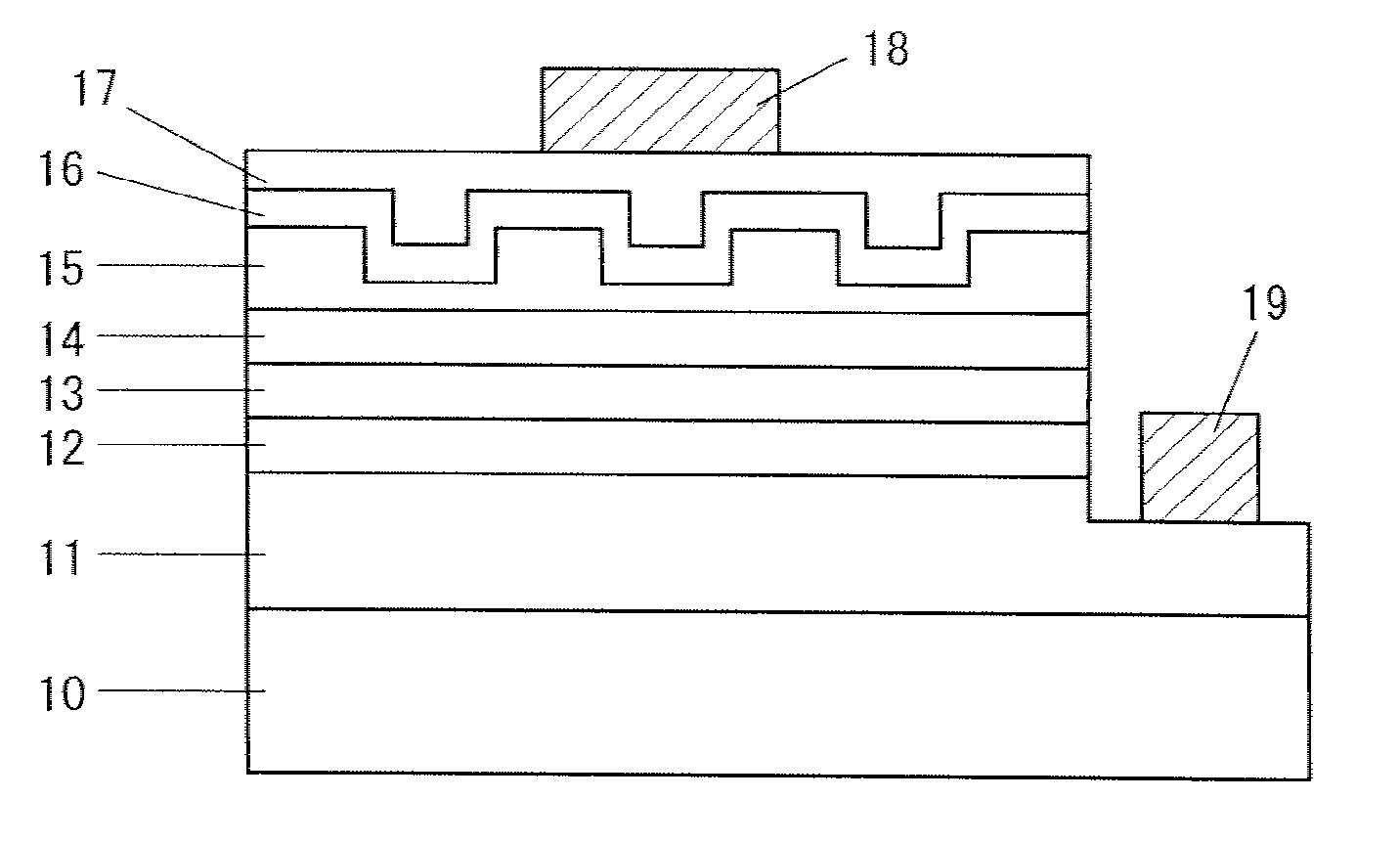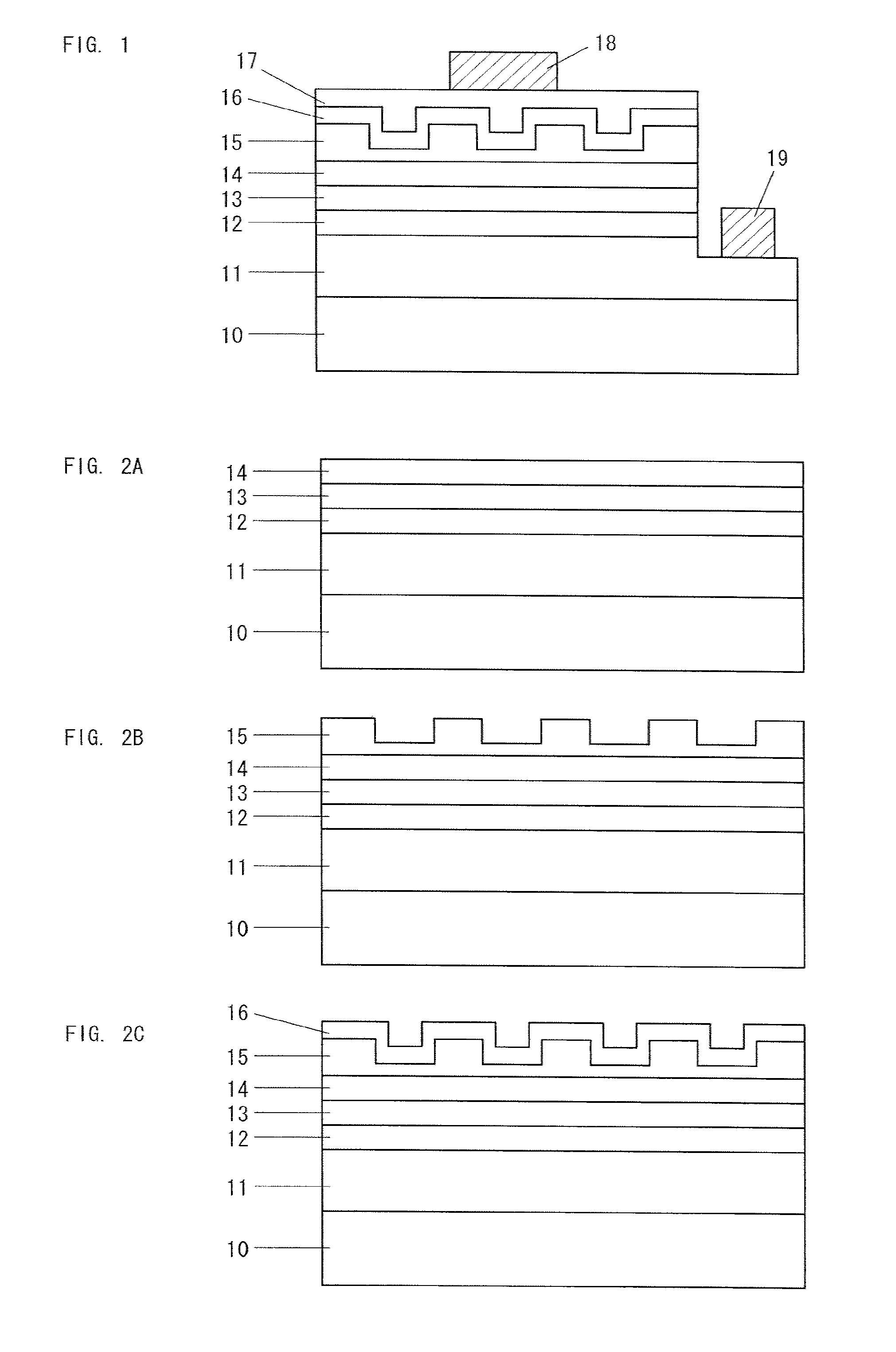Method for producing a group III nitride semiconductor light-emitting device
a technology of nitride and light-emitting devices, which is applied in the direction of semiconductor devices, basic electric elements, electrical appliances, etc., can solve the problems of crystal damage, increase production cost, and increase production cost, so as to improve light extraction performance and reduce production cost. , the effect of easy formation of concave and convex configuration
- Summary
- Abstract
- Description
- Claims
- Application Information
AI Technical Summary
Benefits of technology
Problems solved by technology
Method used
Image
Examples
embodiment 1
[0029]FIG. 1 shows the configuration of a Group III nitride semiconductor light-emitting device according to Embodiment 1. The Group III nitride semiconductor light-emitting device according to Embodiment 1 has a sapphire substrate 10. On the sapphire substrate 10, via an AlN buffer layer (not illustrated), sequentially formed are an n-type contact layer 11 of n-GaN having a thickness of 4 μm, an ESD layer 12 of i-GaN having a thickness of 300 nm and n-GaN having a thickness of 30 nm, an n cladding layer 13 being a multilayer having a thickness of about 64 nm, in which fifteen layer units, each unit being formed of i-InGaN, i-GaN and n-GaN, are deposited, and a light-emitting layer 14 having a MQW structure where an InGaN well layer having a thickness of 3 nm and a GaN barrier layer having a thickness of 4 nm are alternately deposited eight times. On the light-emitting layer 14, sequentially formed are a p cladding layer 15 of p-AlGaN having a thickness of 12 nm and a p contact laye...
PUM
 Login to View More
Login to View More Abstract
Description
Claims
Application Information
 Login to View More
Login to View More - R&D Engineer
- R&D Manager
- IP Professional
- Industry Leading Data Capabilities
- Powerful AI technology
- Patent DNA Extraction
Browse by: Latest US Patents, China's latest patents, Technical Efficacy Thesaurus, Application Domain, Technology Topic, Popular Technical Reports.
© 2024 PatSnap. All rights reserved.Legal|Privacy policy|Modern Slavery Act Transparency Statement|Sitemap|About US| Contact US: help@patsnap.com










